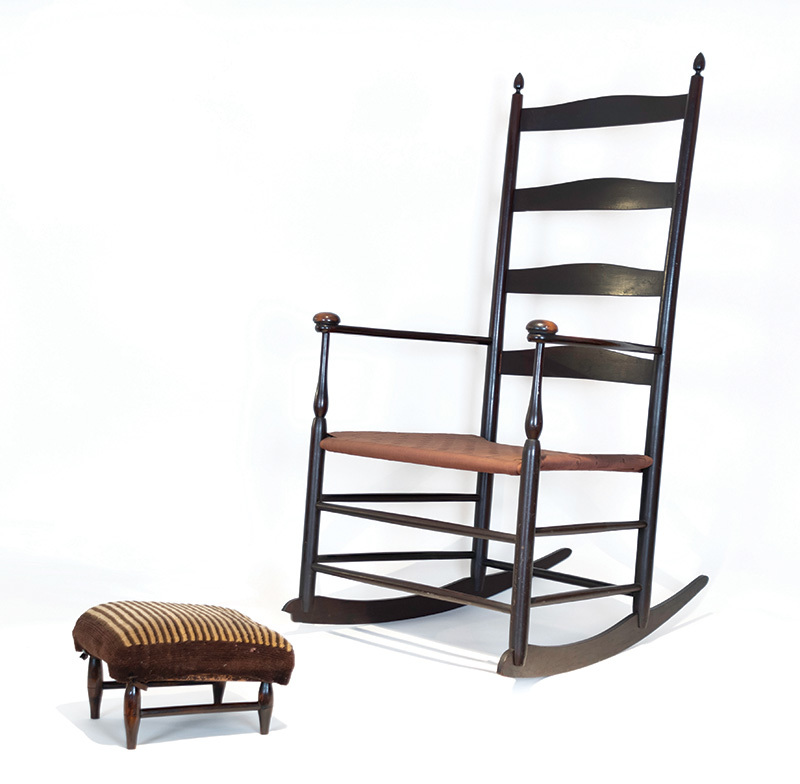ABOUT THE EXHIBITION
Chairway to Heaven: A Celebration of Shaker Seating Furniture
M. Stephen and Miriam R. Miller Shaker Gallery
The United Society of Believers in Christ's Second Appearing, known today as the Shakers, came to the United States from England in 1774. In 1787, their first fully formed, self-supporting community was established at New Lebanon, New York, only a few miles west of the Massachusetts border. Within two years of this founding, brethren there were making chairs for their own use and selling a small number in order to generate funds to purchase goods from “the World” that they could not produce themselves: metals, glass, ceramics, cotton cloth, and foodstuffs such as salt, sugar, tea, and coffee.
Most of the chairs, stools, and benches made at New Lebanon (after 1859, Mount Lebanon), as well as at the other seventeen long-lived Shaker communities spread from Maine to Kentucky, were made for communal use. Some Shaker villages traded these crafted goods with sister villages. There was little in the way of standardization attempted or achieved, with most seating furniture designed for special functions or particular individuals.
All of this changed around 1867 at Mount Lebanon. In this one Shaker community, a chair making industry began. The hallmarks of this business venture mirrored those of the gun manufacturing industries that arose up and down the Connecticut River Valley several decades earlier. The features of this were standardization of sizes, interchangeability of parts, and assembly of the finished product along a line of craftsmen, each dedicated to a specific task. A division of labor developed with the brethren responsible for fashioning all the wooden parts; the sisters for dying these and weaving woolen tapes for the seats.
Five years later, a new building was erected at Mount Lebanon devoted exclusively to the manufacture of chairs, stools, and—in a very limited fashion—benches. This building still stands today. By this time, eight well-defined sizes of chairs were delineated, ranging from #0 (the smallest) to #7 (the largest). Except for occasional special orders, all of the front and rear posts, horizontal stretchers, and back slats for a given number were interchangeable.
A series of colorful, illustrated brochures were produced in the early years, from around 1874 to 1880 to market this seating furniture. Chairs were sold in quantity to department stores in in Philadelphia, Chicago, and New York. The business was so successful, even garnering a Gold Medal at the 1876 Centennial Exposition in Philadelphia, that imitations inevitably followed. The Shakers countered this by applying a gold transfer (decal) to the back slats or legs of chairs and stools.
After the 1930s, with no able-bodied men remaining at Mount Lebanon, chair making ceased although one sister, Sarah Collins continued repairing and reseating older examples until 1942. All of the furniture on the long wall of this gallery are products of this innovative enterprise.
